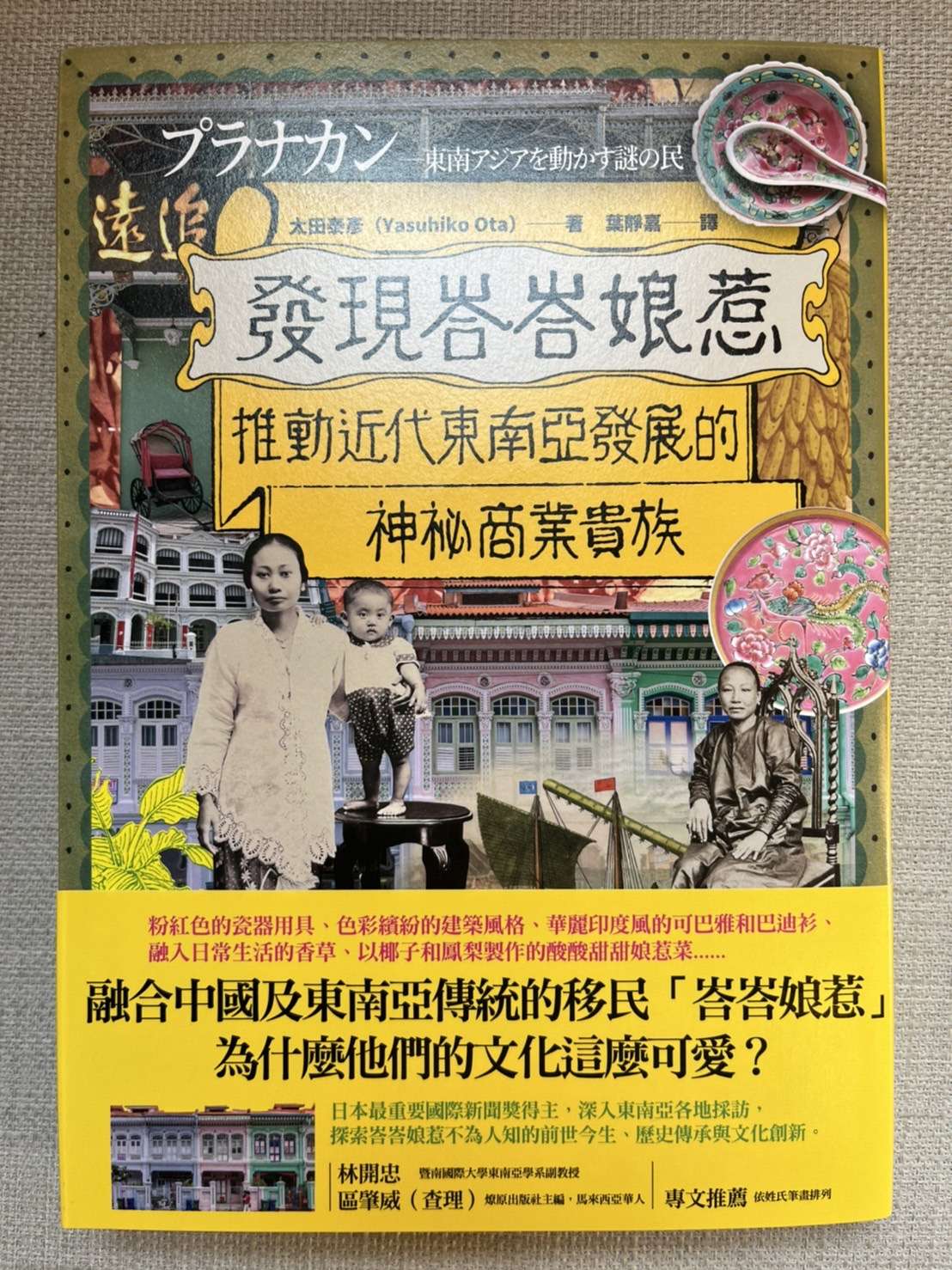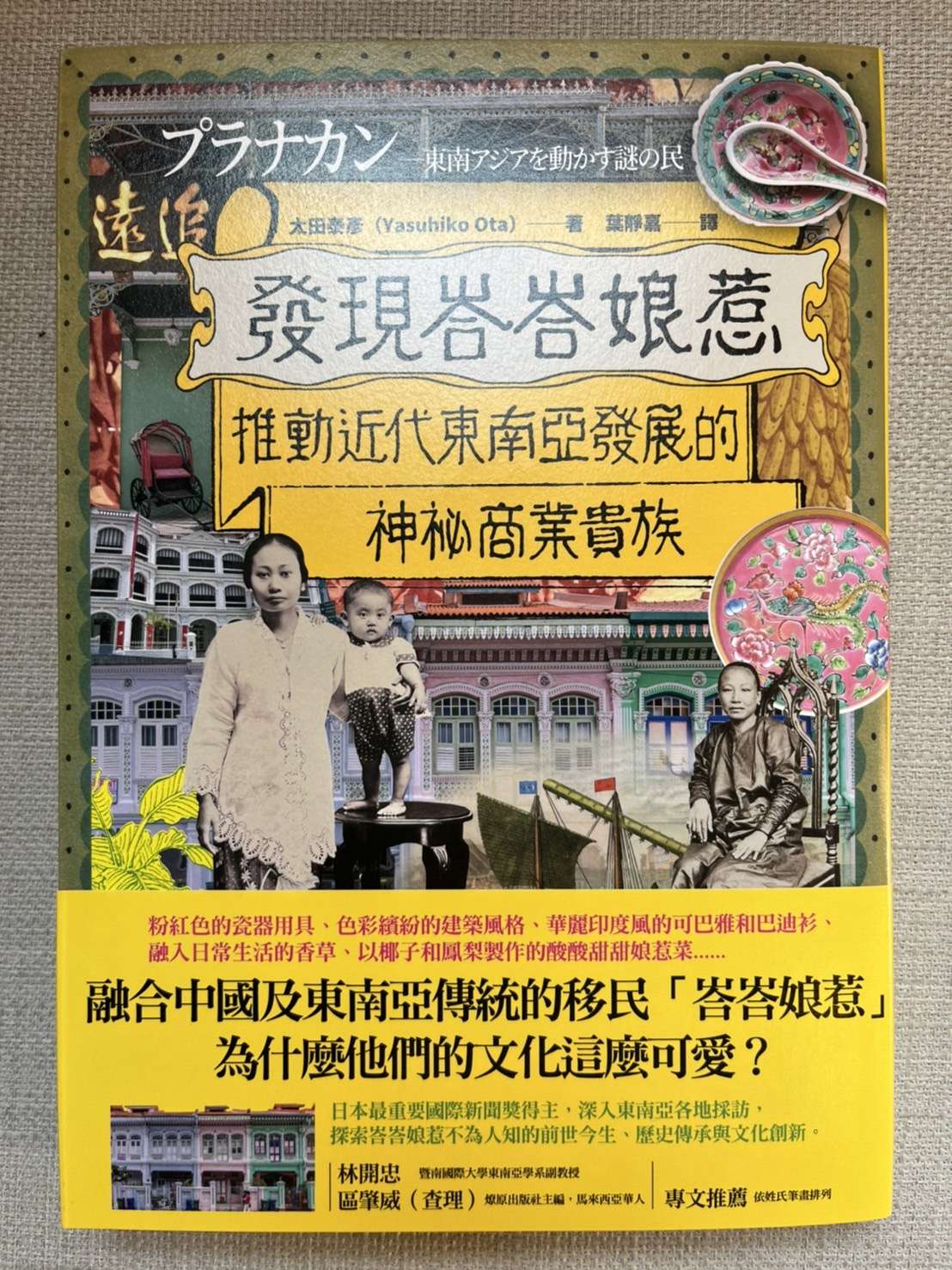Discovering the Baba Nyonya: The Mysterious Business Aristocracy Who Driving Modern Southeast Asia
Discovering the Baba Nyonya: The Mysterious Business Aristocracy Who Driving Modern Southeast Asia
In stock
Couldn't load pickup availability
出版社: 黑体文化
ISBN/EAN: 9786267263365
出版日期: 2023-11-01
页数: 272页
语言: Traditional Chinese
Pink porcelain utensils, colorful architectural styles, gorgeous Indian-style kebaya and batik shirts,
Integrate herbs into daily life, sweet and sour Nyonya dishes made with coconut and pineapple...
Baba Nyonya, an immigrant group that combines Chinese and Southeast Asian traditions,
Why is their culture so cute?
The winner of Japan's most important international journalism award, he has visited various places in Southeast Asia such as Penang, Bangkok, and Singapore.
Explore the unknown past and present of Baba Nyonya, its historical heritage and cultural innovation!
The enigmatic and captivating Baba Nyonya (also known as the Peranakan Chinese) are a distinctive ethnic group in contemporary Southeast Asia. Their ancestors are Chinese immigrants from southern China who intermarried with local Southeast Asians, and have thrived there since the 15th century. While they still maintain Chinese traditions and customs, they have also assimilated into local culture in terms of language and lifestyle, becoming a part of Southeast Asia.
Descended from transcontinental immigrants, the Baba Nyonya people have for centuries served as a bridge for trade and cultural exchange between the West and the East, earning them the reputation of "merchant aristocracy." Beginning with the Age of Discovery in the 16th century, the Baba Nyonya, adept at commerce and gifted with multilingualism, became agents of European trade powers, accumulating immense wealth through commercial activities such as the spice trade, tin mining, and rubber plantations, demonstrating their ambition and ingenuity as a commercial aristocracy.
The influence of the Baba Nyonya extends beyond the commercial realm. Their fusion of traditional Chinese and Southeast Asian cultures creates a unique aesthetic and innovative spirit. Whether it's renowned Nyonya cuisine, traditional clothing called "kebaya," or a variety of everyday items and home architecture, the Baba Nyonya excel at absorbing the strengths of diverse cultures and recreating their own vibrant, distinctive products.
As the book points out, "The 'innovation' that Baba Nyonya uses to create new economic value does not come from advanced technology on the supply side, but is driven by the energy generated by the consumer side."
The author of this book is Yasuhiko Ota, a renowned Japanese international journalist. He was stationed in Singapore in 2015. The Singaporean government's efforts to promote Baba Nyonya culture piqued his curiosity. Where did the unique cultural charm of the Baba Nyonya, known as the business aristocracy, come from? How did they drive the development of Southeast Asia and, in turn, lay the foundation for Singapore's prosperity?
To answer this question, Ota visited Baba Nyonya people across Southeast Asia, conducted in-depth investigations into the mysterious origins of this ethnic group, and unearthed many unknown and wonderful stories.
Why did Lee Kuan Yew refuse to admit he was a Baba Nyonya? And why did Lee Hsien Loong promote the revival of Baba Nyonya culture?
★From decorative tiles and porcelain to clothing and jewelry, why do Baba Nyonya daily necessities always have a cute pink style?
How does the chef of a Michelin-starred restaurant in Singapore elevate Baba Nyonya home-cooked dishes into culinary art?
★How do the Baba Nyonya people of Malaysia and Indonesia actively integrate into local culture while preserving traditional Chinese customs?
Today, the influence of the Baba Nyonya extends beyond the commercial sphere. Their diverse ethnic characteristics, blending Chinese, Southeast Asian, and even Western influences, further enhance their appeal. Take, for example, Nyonya cuisine, which blends traditional Chinese cooking with Southeast Asian ingredients; the vibrant, unique beauty of pink porcelain; and the fusion of Chinese and Indian religious traditions in clothing and architecture. The diverse and captivating cultural charm of the Baba Nyonya people is not merely a reflection of Southeast Asian culture, but a perfect embodiment of globalization.
Yasuhiko Ota
Editorial board member of the Nihon Keizai Shimbun. Graduated from Hokkaido University's Faculty of Science (majoring in physical chemistry), he joined the Nikkei in 1985. After studying at the Massachusetts Institute of Technology (MIT), he was stationed in Washington, D.C., and Frankfurt, Germany. He is a contributor to the Nikkei front-page column "Spring and Autumn." From 2004 to 2021, he served on the editorial board and as an editorial writer.
Since 2015, he has been based in Singapore, moving from Tokyo to cover topics across Asia, including geopolitics, trade, diplomacy, innovative technology, and international finance. In 2017, he won the Bernd-Ueda Memorial International Journalism Award for his coverage of China's Belt and Road Initiative. He is also the author of The Geopolitics of Semiconductors.
Ye Jingjia
A native of Hualien, I hold a master's degree in Japanese language from National Chengchi University. I enjoy the works of Shohei Ōtani and Hikaru Utada, as well as Taiwan's mountains and seas, and other beautiful things. Job offers: eden3q@gmail.com.
Foreword by Lin Kaizhong (Associate Professor, Department of Southeast Asian Studies, Jinan University)
Foreword by Qu Zhaowei (Editor-in-Chief of Liaoyuan Publishing House, Malaysian Chinese)
Prologue | A mysterious tribe
Chapter 1|Lee Kuan Yew's Secret <br />Asia's Sense of Time "Don't Call Me That"
Confessions of Prime Minister Lee Hsien Loong
Chapter 2|Colors and Spices <br />The awakening of the 12-year-old boy: the business spirit of picking up bricks to get rich. Baba Nyonya House Column (1): "Puranakan" or "Peranakan"?
Column 2: Pepper, Cloves, and Peas
Chapter 3|Japan’s Destruction and Support <br />Three and a Half Years of Invisible Bonds of Destiny Column (3): Straits Settlements
Chapter 4 | Land Politics of the Business Aristocracy <br />Billionaires' Street, The Sugar King and the Tin Mines on Phuket Island, Singapore, Raffles and the Great Philanthropist, Thai Diplomats Who Influenced Southeast Asia, and the Baba Nyonya of Java
Chapter 5|People Who Create the Future <br />Opening up a new world of taste: Where did Van Gogh come from? A space filled with beauty. Column (4): CANDLENUT's no-menu cuisine
Final Chapter|Coming to the End
Postscript References
Share


